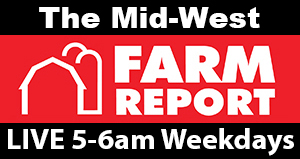
The drop of travel related to COVID-19 brought challenges to the ethanol industry in 2020, but the American Coalition for Ethanol is optimistic for 2021.
By the end of 2020, the nation’s ethanol industry was estimated to reach 85 percent of what would be produced in a typical year, according to Ron Lamberty, American Coalition for Ethanol senior vice president.
“Obviously, that creates market fights for volume,” Lamberty said.
He also noted that the ethanol industry was not included in the first two coronavirus assistance packages.
“Plants had to shut down,” Lamberty said. “They need to get back open. People’s jobs and farmer’s markets depend on that. It’s kind of a mixed bag. The plants that have stayed open managed to meet their payroll whether they’ve drawn back a little bit or changed to sell something like hand sanitizer.
Although plants were able to diversify to stay in business, he predicted a difficult market over the winter.
“I think any time you have a crisis in an industry, your operations get better,” Lamberty said. “Hopefully that will be what keeps them strong for when the markets all come back.”
Looking internationally in a good year, the United States exports more than 1 billion gallons of ethanol to up to 60 countries around the world, according to Brian Jennings, American Coalition for Ethanol CEO.
“Our largest export destinations are generally Canada and Brazil,” Jennings said. “We’re developing and looking forward to an emerging market which would have been a game-changer in China. We’ve obviously had some issues there with trade wars, and the retaliatory tariffs imposed on U.S. ethanol make it effectively prohibitive to send ethanol to China. We’re hoping that we can find a resolution.”
Exports markets have been critically important to the industry at a time when domestic demand was constrained. Jennings said many countries seek ethanol as a way to address air pollution and greenhouse gas emissions coming from motor vehicles. Additionally, ethanol is a fuel used to boost octane levels.
“Ethanol is one of the cleanest and cost-effective ways to boost the octane of gasoline or of motor fuel,” Jennings said. “Octane helps our engines run more efficiently, and it prevents engines from knocking.
The American Coalition for Ethanol was hopeful for the industry under a Biden-Harris administration. Lamberty said the industry was challenged with small refinery exemptions under the Trump Administration.
“Over the last few years, most of California’s carbon reductions have come courtesy of ethanol, and we need to continue to make the case that ethanol is a good, clean, low-carbon fuel despite the misinformation campaign that’s been out there against us for years.”
Jennings predicted there would be a pivot toward promoting various forms of energy and sources of fuel that have a proven record of reduced greenhouse gas emissions.
“There are concerns among some that means more electric vehicles under a Biden Administration, potentially eroding the market share for ethanol, but we have a positive story to tell when it comes to how corn ethanol reduces greenhouse gas emissions by about 50 percent compared to gasoline,” Jennings said.
He noted investments ethanol producers are making as well as methods farmers are using to reduce a carbon footprint such as no-till fields will reduce ethanol greenhouse gas emissions by 60 to 70 percent compared to petroleum.
“I think as long as we are able to go on the offense and position ourselves as part of the climate solution, we could bode very well under a new administration,” Jennings said.
On the domestic level, and the American Coalition for Ethanol is seeing growing interest among gas stations and convenience stores of all shapes and sizes that wish to offer E15 and E85.
“I think part of that is credited to the recent USDA program that provided infrastructure cost-share assistance to those retail stations to install equipment to sell ethanol,” Jennings said.
Lamberty explained that the American Coalition for Ethanol also helps stations with their infrastructure needs.
“We try to make sure stations hear what they need to hear from us because what they’re in the business for is to bring in more customers and make money,” he said. “Ethanol does that for them, with E15 in particular. If the market is getting smaller for gasoline, then what we need to do is try and get a bigger share of that smaller market.”
They assist stations with grants for tanks, dispensers, or lines that can help stations install higher blends of ethanol, as well as help stations understand that if they have equipment that is less than 20-years-old, it is probably E15 compatible. The American Coalition for Ethanol also added a Flex Check Tool where stations can enter the names of dispenses and nozzles to see if they work with E15.
“More and more of them will find they that are, yet they’ve been told over the years that it costs hundreds of thousands of dollars to convert and sell E15,” Lamberty said.
More information about the ethanol industry for consumers, producers, or stations can be found at flexfuelforward.com or ethanol.org.
–Kaitlyn Riley

Leave a Reply